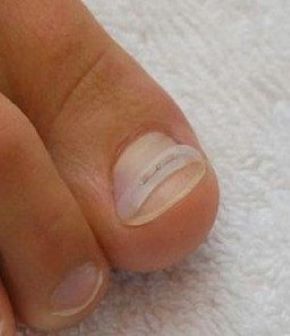Fungus is responsible for both skin and nail conditions of the feet. Fungus is the cause of tinea pedis which is better known as athlete’s foot. This skin condition can manifest itself in between the toes, at the bottom and sides of the feet, or both. Occasionally, the condition affects only one foot. Many conditions can mimic athlete’s foot; therefore, it is a good idea to consult a podiatrist before spending money on over the counter products. Athlete’s foot does not always cause an itch. Many times it presents as dry, scaly skin and people will treat it as such. The problem is that lotions and creams without antifungal properties may simply foster the moist environment that fungus thrive in.
Fungus is also the cause of the dreaded fungal nail. The medical term for this condition is onychomycosis. Onychomycosis causes changes in the nail such as thickening, discoloration, powdery debris beneath the nail, and separation of the nail from the underlying skin. Many times an individual will be unaware of having a chronic case of athlete’s foot. Eventually, the fungus that caused the athlete’s foot will transfer to the nail(s). In some instances, fungus will have the opportunity to invade the nail if the nail has undergone a traumatic event. It may even be introduced during a pedicure.
Prevention is ideal as these conditions can be difficult to manage. Fungus survives in warm, dark, moist places. A shoe is the perfect example of this environment. This is why these conditions rarely affect the hands. The hands can become infected if the individual has an occupation which requires his hands to be immersed in water for long periods of time. Likewise, people who garden without gloves may also become infected because fungus is present in soil.
Changing socks/nylons daily or even twice daily is optimal. Avoid wearing the same shoes everyday. Socks should be made of a natural/synthetic blend that wicks moisture from the feet. Shoes should be made of natural materials as well. Applying powder directly to your feet is a good idea as is spraying the inside of the shoes with an antifungal spray. If you suspect fungus, particularly of the nails, avoid soaking your feet in warm water as this will encourage moisture within and under the nails. Make every effort to avoid walking barefoot on the floors in public places such as spas, gyms, and hotels.
Treatments involve both topical and oral medications. Your podiatrist can discuss the risks and benefits of both. He/She can also determine if you are the right candidate for oral medication.






